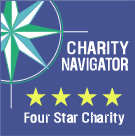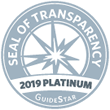 Presented by Antonio C. Bianco, MD, PhD
Presented by Antonio C. Bianco, MD, PhD
American Thyroid Association Annual Business Meeting
Sheraton Denver Downtown Hotel
Denver, Colorado
Thursday, September 22, 2016
It has been an honor and a privilege to serve as your president for the last year. This allowed me to have an in-depth view and understanding of the offstage work that makes this organization a global leader. It also gave me an opportunity to participate and contribute with current issues that involve our Association.
The ATA is a highly functional organization
It is hard to overstate the phenomenal work that goes on at the ATA office led by our Executive Director Bobbi Smith and our Secretary Victor Bernet. Having a stream of such successful dyads has certainly contributed to what the ATA is today, a highly functional organization with a logical and reliable operational and financial infrastructure. The standing committees and taskforces on thyroid research, education, clinical activities and annual meeting provide the basis for how the work is broken down and progress is achieved. The Board of Directors meets regularly, on the phone or on the road, charges these groups, monitors their work and considers their reports, eventually approving for public consumption. This is permeated by a gigantic effort on the preparation for our annual meeting, with program development, travel and on-site logistics.
The ATA Institutional Conflict of Interest
Like any other highly functional organization, all of this depends on skilled staff and has a cost. We are lucky that our members graciously volunteer so much work for the advancement of the ATA and global knowledge about thyroid diseases; but tons of bills and other financial commitments still must be dealt with. How is this accomplished? The development of this financial framework that allows us to be successful and grow did not happen overnight. It was carefully planned and executed over time by a series of highly capable individuals occupying critical positions as secretary, treasurer and executive director working closely with the Board of Directors. We passed different stress tests and today our budget not only pays for our housekeeping activities but the ATA also proudly offers research grants, scholarships and supports smaller organizations such as the Association of Program Directors in Endocrinology, Diabetes, and Metabolism (APDEM) and the bi-annual International Workshop on Resistance to Thyroid Hormone & Thyroid Hormone Action.
The ATA receives income from basically five sources: (a) membership dues, (b) donations and gifts, (c) ATA publications, (d) annual meeting registration fees and booth rentals, (e) pharmaceutical and/or medical devices industry: (e-1) restricted to CME activities and (e-2) unrestricted.
Special consideration should be given to sources connected with pharmaceutical companies. This is because through our clinical and research guidelines as well as position statements we as an organization advise, educate and provide the clinical parameters under which many pharmaceuticals, equipment and devices can and should be used. Thus, this needs to continue in a way that our colleagues, our patients and the public understand that we have been and remain independent from these companies and their support.
With that in mind, we have now formalized in a document, the Institutional Conflict of Interest Disclosure, that is posted online and updated yearly. Even though in fiscal year 2014 only 2% of our budget was made up by unrestricted funds from pharmaceutical or medical industry, we felt it is important that we acknowledge that the ATA has such external financial and business relationships, which are important for its mission. This document not only makes these relationships transparent to its members and general public, but it clarifies where and how that money is used to support our mission.
Work in Progress – Virtual platform for thyroid research data storage/sharing
The ATA already has a strong tradition as a scientific organization and both clinical as well as basic research are featured extensively at our annual meetings. In addition, the ATA provides a number of research awards every year that helps investigators at the beginning of their careers. One area that we are currently exploring is the creation of virtual platforms that would make thyroid-related research data available for physician scientists and basic scientists. For example, as a result of the technological and informatics advance, today’s research might generate thousands of data points that might be of interest in a number of independent research projects. For example, data obtained from microarrays, RNA seq, methylomas, exome sequencing, or proteomic studies have a tremendous value that goes well beyond the original question that led to the data. How can we make these types of thyroid-related data available to all? We discussed this with the research committee and two of our members volunteered and are enthusiastic about spearheading this project, Rebecca Schweppe and Tony Hollenberg. They are studying what the best platform to use or to partner with considering what is already available such as NURSA (Nuclear Receptor Signaling Atlas), for example. We should have news about this initiative soon.
Future Work – Value-Based Medicine
Through the years the ATA has maintained its leadership by a number of educational, research and clinical initiatives showcased in our publications and annual meeting. A major piece of this effort relies on developing clinical guidelines. This is the moment in which experts separate fact from fiction by scrutinizing to a great level of detail all relevant studies, and make recommendations based on, as much as possible, unbiased data. It is of course expected that clinical outcomes will improve by understanding the limits of our knowledge and following these well thought recommendations. How this is assessed and what defines success in our own practices is our next frontier.
The Centers for Medicare and Medicaid and multiple non-governmental organizations are now rewarding health care providers with incentive payments for the quality of care they give to patients. Multiple programs exist and they all have in common the need to define appropriate success, quality metrics. At the Federal level, MACRA and the Merit-based Incentive Payment System (MIPS) pathway is the legislation that equates payments to clinicians with the value and quality of care they provide. Hundreds of quality metrics exist. For example, blood pressure is used to assess effectiveness of treatment of hypertension, HbA1C levels are used to assess treatment of diabetes. Thus, payments to clinicians managing these conditions can be positively or negatively affected based on these very specific quality metrics. Should we as an organization be thinking about quality metrics to assess effectiveness of treatment of patients with thyroid disease?
I would argue that as a group we should lead the effort to define what the highest quality of care for a thyroid patient is. In other medical specialties, professional societies have created registries where participants submit quality data, e.g. compliance with nationally accepted guidelines, complications or mortality, on a regular basis. As a result, organizations can be benchmarked against all participants nationwide. A number of these registries are evaluated by the National Quality Forum (NQF) and utilized to create consensus standards that can be included as a metric in the MIPS pathway.
Let us take a moment to consider these changes in the way physicians and health care organizations are being evaluated and reimbursed, and how the American Thyroid Association can lead the way in this process.
Again, having served as your President has been a tremendous experience, for which I humbly thank you all very much.
Antonio C. Bianco, M.D., Ph.D.





